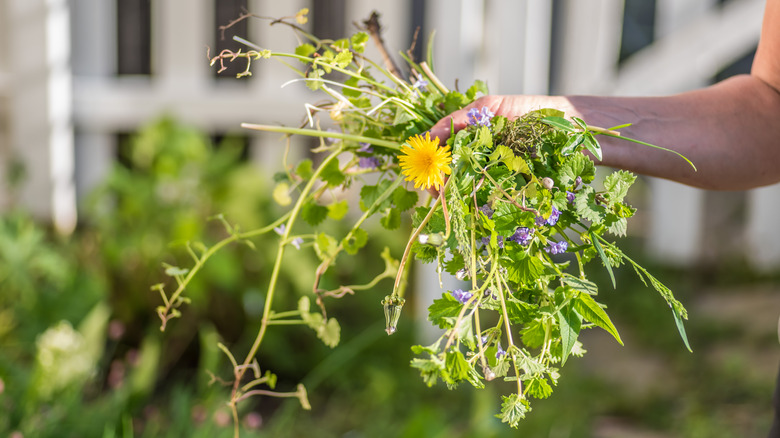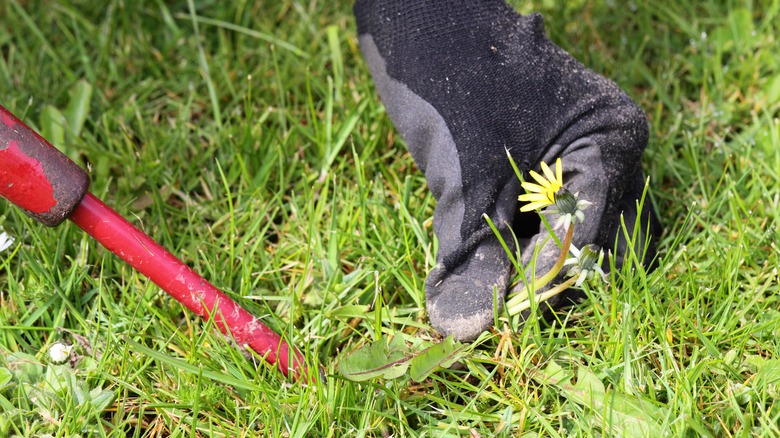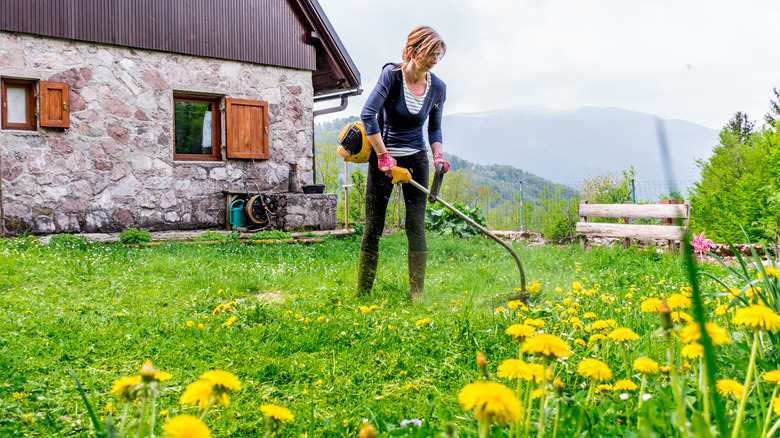The Weed-Pulling Myth That You Need To Stop Believing For Your Lawn's Sake
Seeing an unsightly weed on your lawn is annoying, to say the least. Now, you must find a way to remove it without killing your back or the grass surrounding it. Many say hand-pulling weeds is the best method to use, but that's not quite true. It's often a quick fix, like putting tape over a leaky pipe; it will eventually become a huge problem you can't ignore any longer. It's better to take care of it now rather than later.
There are several ways to remove weeds from your lawn to keep it looking beautiful and lush, though some of them can be dangerous, like herbicides. Many gardeners are proponents of hand weeding because it's an environmentally-friendly way to handle things. Yes, it's labor intensive and takes some determination, but it doesn't involve chemicals or upsetting the local ecosystem. But if hand-pulling weeds hasn't worked out for you, it's probably time to try something else.
Hand-pulling weeds isn't the best method after all
If you want to get rid of weeds once and for all, you'll likely need to resort to methods other than pulling by hand. If you're dealing with pesky perennial weeds, you'll have to remove every single root, and they have intricate root systems that keep them alive for many years. Mature weeds are always more difficult to pull than young weeds, so if you have a perennial that has been around for a while, it's going to give you a tough time.
Aside from the physical struggle, hand weeding can also exacerbate your problems by planting more seeds. As you shake the plant around when you pull it, you can disperse the seeds across your lawn, and you'll have a bigger problem to deal with next year. Weed seeds can survive several years before germinating, so you could potentially cause yourself to have hundreds of weeds lying around waiting for the perfect moment to germinate.
You may also damage nearby plants as you struggle to uproot weeds. If you pull up annual plants, you risk removing them permanently from your yard since they may not have had the chance to drop seeds yet. In a lawn, you risk pulling up grass and leaving a patch that will take time to fill in again.
How to get rid of weeds effectively
Hand-pulling weeds is only effective if you do it early and often. Pull up young weeds as soon as you see them and get the entire root system. You can use tools like a screwdriver or dandelion fork to make it easier to uproot. Pull weeds by hand after it rains, or water your lawn before you plan to weed to make it easier.
Other ways that work well include larger tools like weed whackers or using cultural controls. Change how often you water and fertilize your lawn to stop encouraging weed growth. Mowing your lawn less often can help it grow thicker to choke out weeds on its own. Aerate the soil to allow the grass to receive more oxygen to encourage growth.
Herbicides work, too, but be sure to understand how they can affect the other plants and animals on your property. Many herbicides are made for lawns and won't affect the grass, but they could harm plants you want to keep. They can also harm pollinators and people if they're not used as directed on the package label.


